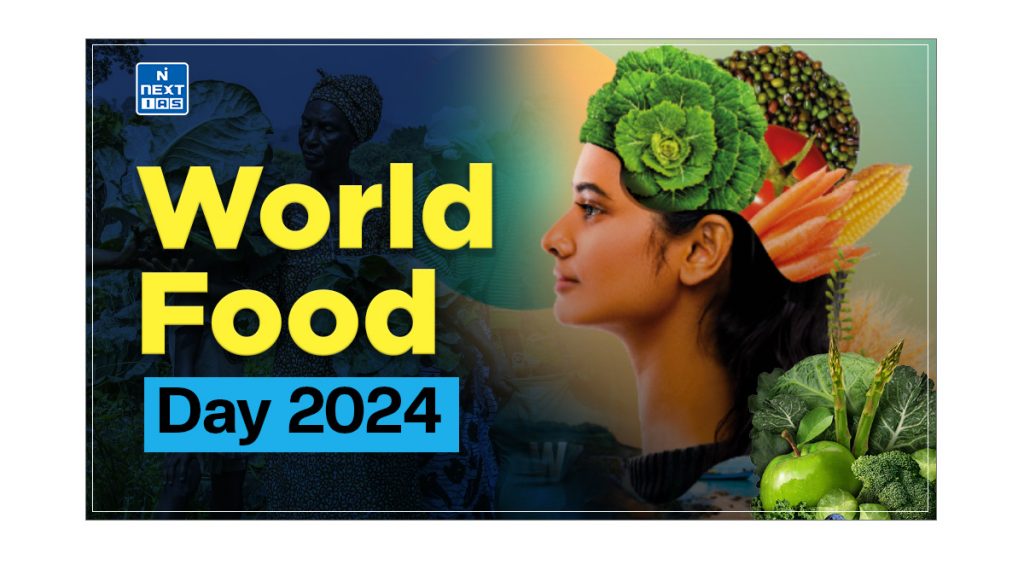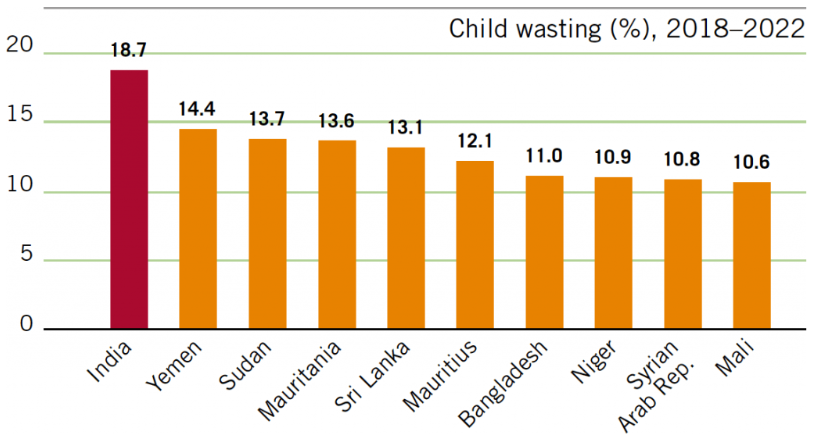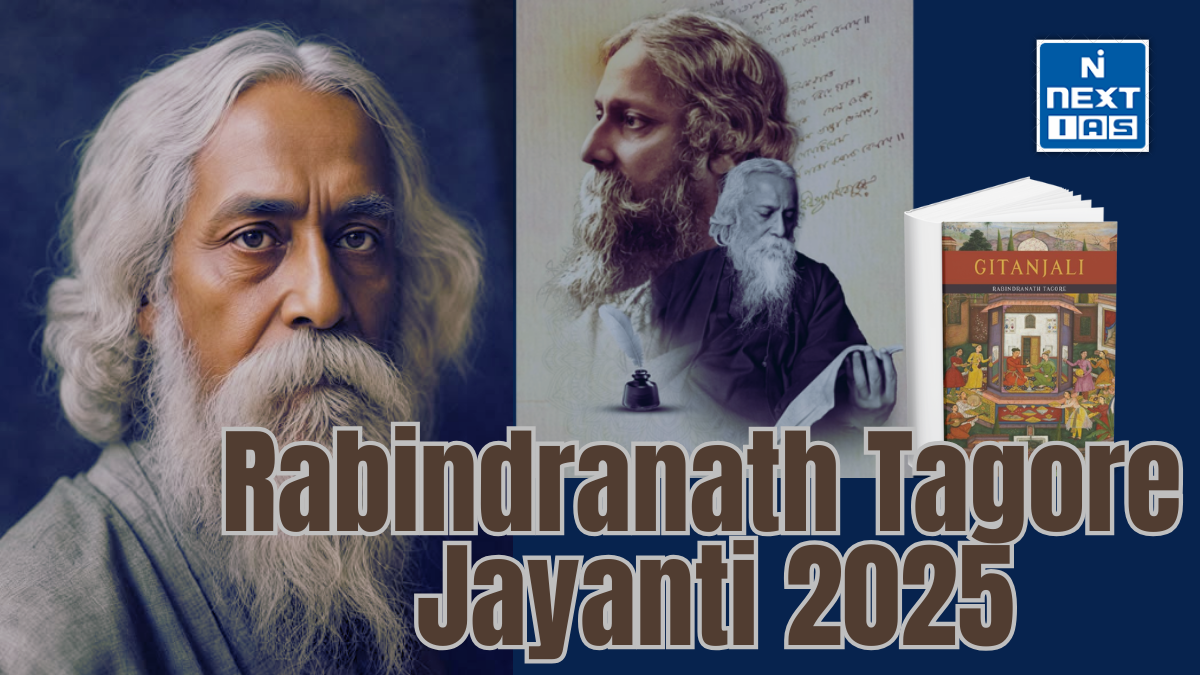
Context
- October 16, deal with the celebration of the World Food Day which emphasis on the furtherance of food security all over the world. This article covers the details about the World Food Day and India’s status to tackle the food security.
Theme of the Day
“Right to foods for a better life and a better future”
Background
- The Food and Agriculture Organization (FAO), a specialized agency of the United Nations, established World Food Day in 1945.
- It took 34 years for this day to be recognized as a global holiday, which happened at the 20th FAO conference in November 1979.
- After receiving official recognition from the United Nations, 150 countries started celebrating this day.
More on News
- Since 2014, the World Food Day has been dedicated to advocating for global food security and addressing poverty in rural countries.
- In recent times, the World Food Day has utilized its yearly celebration to highlight various facets of food security and agriculture.
- These include themes such as fishing communities, climate change, and biodiversity.
Objective of the World Food Day
The goals of World Food Day are as follows:
- Foster attention to agricultural food production and promote various efforts from national, bilateral, multilateral, and non-governmental organizations towards this objective.
- Encourage economic and technical cooperation among developing nations.
- Promote the involvement of rural communities, particularly women and marginalized groups, in decision-making processes and activities that impact their living conditions.
- Raise public awareness about the issue of hunger on a global scale.
- Facilitate the transfer of technologies to developing countries.
- Enhance international and national solidarity in the fight against hunger, malnutrition, and poverty while highlighting accomplishments in food and agricultural development.
Significance of the World Food Day
- The world’s farmers produce enough food to feed more than the global population yet, hunger persists. Around 733 million people are facing hunger in the world due to repeated weather shocks, conflicts, economic downturns, inequality, and the pandemic. This impacts the poor and vulnerable most severely, many of whom are agricultural households, reflecting widening inequalities across and within countries.
- Food is the third most basic human need after air and water – everyone should have the right to adequate food. Human rights such as the right to food, life and liberty, work and education are recognised by the Universal Declaration of Human Rights and two legally binding international covenants.
Status of India in Global Hunger Index 2023
- India has been placed at the 111th rank among 124 countries, while its neighbouring countries Pakistan (102nd), Bangladesh (81st), Nepal (69th), and Sri Lanka (60th) have performed better in the index.
- India’s position has declined by four places compared to its 107th position in 2022.
- India has emerged as the country with the highest child-wasting rate in the world, according to the recently released Global Hunger Index (GHI) 2023. This rate stands at 18% percent, indicating a severe problem of undernutrition in the country.
- The GHI is an annual report that is jointly published by non-profit organizations Concern Worldwide and Welthungerhilfe.
- Child wasting, which is one of the four indicators used to calculate GHI scores, refers to the proportion of children under the age of five who have low weight for their height.
- The indicators used in the GHI, namely undernourishment, child stunting, child wasting, and child mortality, highlight deficiencies in both calorie intake and essential micronutrients.
- It is worth noting that India’s child wasting rate surpasses that of conflict-affected countries like Yemen (14% percent) and Sudan (13%percent), which rank second and third on the list, respectively.

Government Initiatives
National Nutrition Mission (NNM)
- Government introduced the National Nutrition Mission (NNM) or the POSHAN Abhiyaan.
- The NNM focuses on improving the health of children, pregnant women, and lactating mothers by addressing issues such as stunting, undernutrition, anaemia, and low birth weight infants.
- To measure the impact of interventions related to maternal, new born, and child health as well as nutrition, the NNM utilizes the Lives Saved Tool (LiST).
National Food Security Mission (NFSM)
- To achieve its objectives, the National Food Security Mission implemented eight strategies:
- Prioritize districts with low production and significant potential.
- Establish innovations based on cropping systems.
- Adopt agro-climatic zone-wise planning and a cluster approach to enhance crop productivity.
- Increase focus on annual crop (pulses) production and diversify crops.
- Promote and extend improved technologies such as seeds, Integrated Nutrient Management (INM), Integrated Pest Management (IPM), input use efficiency, and resource conservation technologies. Additionally, capacity building of farmers and extension functionaries is emphasized.
- Ensure timely delivery of interventions to the target beneficiaries by closely monitoring the flow of funds.
- Combine multiple interventions and align district goals with plans.
- Implement agencies to assess the impact of interventions and adopt a result-oriented approach.
Zero Hunger Program
- It was initiated in India in 2017 with the objective of enhancing agriculture, health, and nutrition.
- This program was established by the Indian Council of Agricultural Research, the Indian Council of Medical Research, the M. Swaminathan Research Foundation, and the Biotechnology Industry Research Assistance Council (BIRAC).
- Its main focus is on the development of agricultural machinery, restructuring farming practices, establishing genetic gardens for bio fortified plants, and implementing zero hunger training.
- The Zero Hunger Program objects to achieve the following objectives:
- Reduce child stunting among children aged 2 years and younger.
- Ensure year-round access to food for all.
- Establish stable food systems.
- Enhance productivity and income of small farmers.
- Minimize food waste
Eat Right India Campaign
- The Eat Right India movement was initiated by the Food Safety and Standards Authority of India with the goal of ensuring that the Indian population can access food that is both healthy and safe.
- This program is based on the principles of enhancing regulatory capabilities, fostering collaboration, and empowering individuals.
- In essence, the Eat Right India Movement aims to promote the consumption of nutritious, safe, and sustainable food within communities.
- It recognizes that poor dietary habits can impact individuals of all age groups, leading to various health issues.
- To address this concern, the movement is partnering with restaurants, agricultural sectors, food producers, government ministries, and professional chefs to bring about positive change.
Food Fortification
- Eating poor-quality food can lead to malnourishment and anaemia, which are prevalent among children and women in the Indian community.
- In an attempt to reduce the prevalence of malnutrition and anaemia, India has been practicing food fortification since the 1950s.
- Food fortification involves the addition of essential nutrients to food through chemical, biological, or physical means. Fortified food items commonly include rice, wheat flour, edible oil, salt, and milk.
- Regrettably, a significant portion of fortified food, around 40% to 60%, is not consumed by low-income women and children. This is primarily due to certain states failing to procure fortified food, lack of transparency in public supply chains regarding information about fortified food, and a shortage of distribution channels in rural areas.
India has implemented five hunger-fighting initiatives, all with the aim of combating hunger. While some of these initiatives have achieved their targets, the battle against hunger is still ongoing. By incorporating more nutrients into daily diets, many individuals could be saved from hunger and diseases. Recognizing the severity of the issue, the government has established initiatives to address this problem.
Additionally, World Food Day is a significant event that goes beyond just appreciating delicious food. Its purpose is to bring attention to those who are not fortunate enough to have access to such meals. This includes people around the globe who experience hunger and starvation. The issue of hunger is prevalent in many countries, and it is crucial for us to increase awareness and take action to address this problem.
Sources






